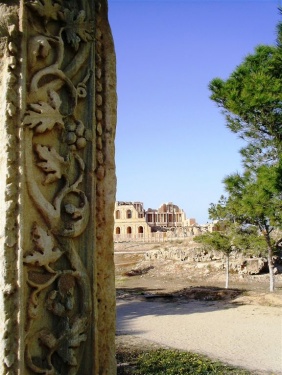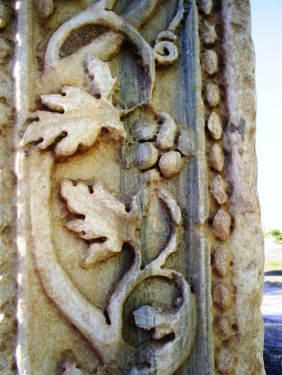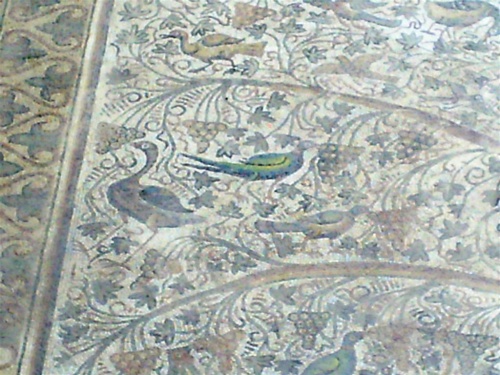This last weekend I showed a visitor round one of the gems of Libya – a Roman city (not Leptis Magna – might be there next weekend) but Sabratha about 60km west of Tripoli. Good day out (when we eventually found it after 4 hours of driving – not well sign posted. I read that the Roman remains (some of the best in the world in Libya) are not celebrated here because of the association with Italian Occupation – Libya was an Italian Colony for around 30 years and it has a violent history of occupation down the centuries – particularly in the last century – many of the desert battles of WW11 were in Libya) eventually after taking practicaly every side road between here and the Tunisian border…. where was I… Sabratha – you are free to clamber over every ruin in sight, walk over the several mosaics that still remain outside, even pick up shards of pottery – though I didn’t – very strange compared to the attitude around most major ruins in Europe.
Anyhow I’ll be sharing a few of the horticultural piccies from the site – not absolutely every picture I took… only most of them.
First let me start with almost the very last photo I took there which shows a common motive among the decorations – the grape vines and grapes. Now why should that be so common… hey we are talking Romans here so I’m guessing that the wine flowed like… wine. Grapes vines are still common here in Tripoli but planted mainly for shade and desert fruit and not for wine making. Libya is a very strict teetotaller nation. When I compare it to the grape vine outside my window I must say that the carving is extremely good – very realistic.



Now one of the cultural highlights is the mosaic floor of a Justinian Church
which has been moved into a dedicated museums along with other fine examples of mosaics and sculptures. Unfortunately the picture above is not so clear because of a) the poor camera (after seven years in the desert I guess that you too wouild be a bit fuzzy. The macro facility is well… not up to scratch), and b) the strong light coming in from the window which provides a strong contrast so washes out a lot of the colours (although the colours are very dulled after 1500 years plus – the church is 5th Century Byzantian – under the sand it isn’t so suprising). So inside the museum the whole mosaic floor of the church is laid out – maybe 10 metres by 30 metres – consisting mainly of varied birds sitting on the branches of a tree – well not really a tree, it is a grape vine tree. The birds are depicted very well – even in the small section in the photo it is quite easy to see a flamingo, a rooster, a goose, a partridge and (what to me looks like) an indian mynah bird and possibly a nightingale but then most sludge brown passerine birds are usually though of as nightingales. The brightest bird is the green and blue bird on the left of the church which is picking away at the grapes and is (possibly) a pheasant. I don’t know of any other birds that colour but will think on it.


Thanks for posting the pictures, another place I may have to visit!
LikeLike
Thanks Dr Dark, they’re’ll be some through out the week – inside and out – as long as I can get a tenuous link to flowers in there somewhere.
LikeLike
Thanks for sharing those pics apach beautiful art work possibly hundreds of years old 🙂
LikeLike
Thanks for posting the pictures. I lived in Tripoli as young girl back in the ’50s and we visited both Sabratha and Leptis Magna. Brings back wonderful memories of our time there.
LikeLike